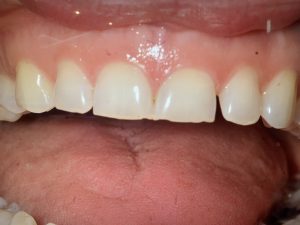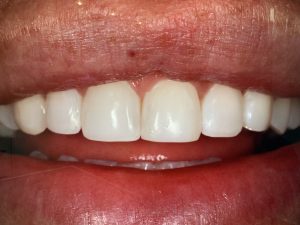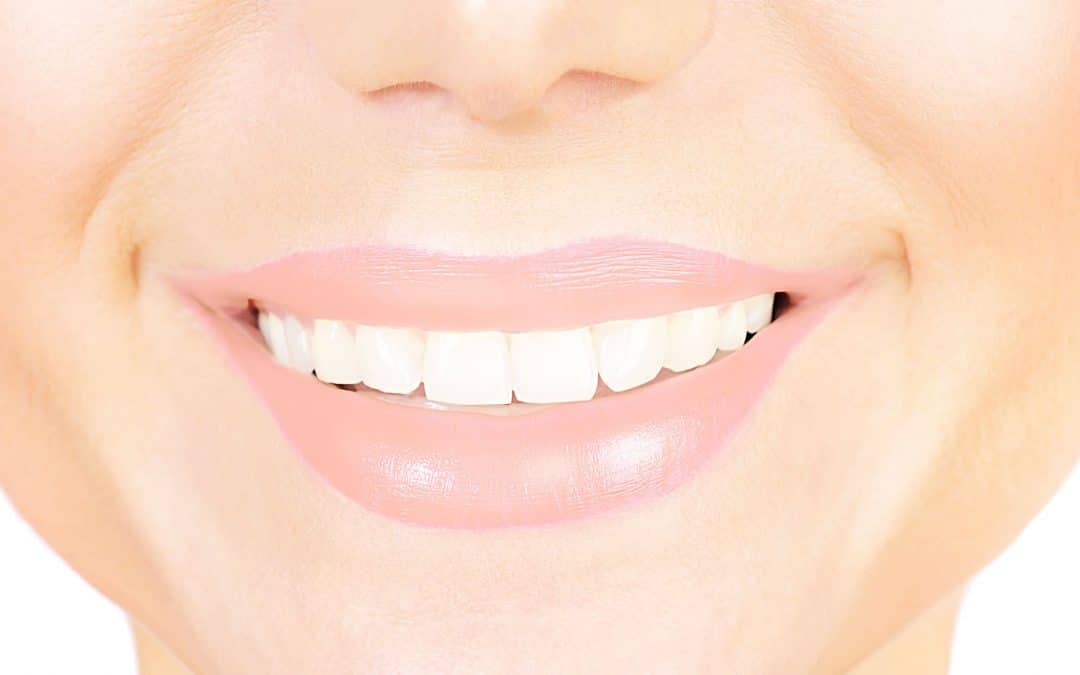Contents
1. What is Composite Bonding and How Can It Improve Your Smile?
2. What is Composite Bonding
3. The Composite Bonding Procedure
3.1. Prior to composite bonding
3.2. The procedure
3.3. After the procedure
4. When is Composite Bonding Recommended?
5. Types of Composite Bonding
5.1. Direct Dental Composite Bonding (sometimes known as composite veneers)
5.2. Pros and Cons
6. Improving Your Smile with Composite Bonding
7. Here Are Some Ways That This Treatment Can Help to Restore Your Smile
8. Fill in gaps between teeth
9. Masking the appearance of discoloured teeth
10. Repair chips and teeth cracks
11. Tooth reshaping
12. How is Composite Bonding Done?
13. Why Is It Necessary?
14. How to Care for Your Composite Bonding?
15. Before and After Composite Bonding
16. Book A Consultation And Get Professional Cosmetic Treatment!
Composite Bonding and How Can It Improve Your Smile?
When you’re not happy with your teeth, showing off your smile is often the last thing on your mind. The good news is, there are lots of dental treatments available to improve your smile, including composite bonding for teeth.
When it comes to improving your smile and boosting your confidence, a wide range of cosmetic dentistry treatments can be used to enhance, rectify, and improve your smile.
Cosmetic bonding is a popular treatment, which can be used to hide minor imperfections in your teeth that may be impacting your confidence.
What is Composite Bonding
Composite bonding is a popular cosmetic treatment that is widely used to improve the aesthetic appeal and functionality of teeth, especially if you are looking to enhance the look and feel of your smile. Used to repair minor damage such as gaps, chips or cracks, composite bonding can also provide an effective treatment for discolouration and involves attaching composite resin to the tooth in order to reshape and restore it.
Ultimately, this procedure is renowned for achieving a natural finish, giving you a smile that you are proud to show off!
How Does Composite Bonding Work
Before deciding whether or not bonding is the right option for you, it’s important that you take the time to truly understand what is involved with each step of the procedure. We have outlined what you can expect at each stage.
~ Prior to composite bonding
Prior to your composite bonding procedure, a thorough consultation will be completed by your dentist to discuss all aspects of the procedure, as well as your cosmetic goals. At this stage, an X-ray will also be taken so that your dentist can examine your teeth and gums, to ensure that you meet the criteria for this procedure. For example, if you have gum disease, tooth decay or any other oral health concerns, you may not be eligible for the procedure. Any treatments for your dental health will always come first before any aesthetic treatment is carried out.
You will then be asked to select a shade. Your dentist will guide you on this decision as it’s important that the shade you choose matches your natural teeth.
~ The procedure
First and foremost, the surface of your tooth will be prepared for the treatment. This involves your dentist applying a conditioning liquid to your tooth once it has been roughened. This is a core part of the procedure as these steps help the bonding material to securely stick to your tooth.
Next, the composite resin material will be applied and your dentist will smooth the resin material into a desired shape that enhances the natural appearance of your teeth. Once you and your dentist are happy with the shape, the composite resin is then hardened using a specialist curing light which is designed to bond the materials to your teeth.
Finally, your dentist will make any necessary final adjustments to your bonding and polish your teeth.
~ After the procedure
After dental bonding, it’s incredibly important that you follow a stringent aftercare plan to ensure that you get the very best results from your procedure.
For example, you must adhere to the following advice:
✓ Optimise your oral hygiene by brushing your teeth twice a day
✓ Floss between your teeth once a day
✓ Visit your dentist regularly for check-ups and cleanings.
When is Dental Bonding Recommended?

One of the main advantages of dental bonding is that it can be used to make a whole host of cosmetic improvements to your smile – instantly boosting your confidence.
Composite bonding is recommended to rectify the following concerns:
✓ Conceal chips or cracks in your teeth
✓ Camouflage tooth discoloration
✓ Change the shape of your teeth
✓ Close gaps and spaces between your teeth
At the same time composite resin material is also used in restorative dentistry to address the following concerns:
✓ Fill cavities
✓ Replace old silver dental fillings
✓ Protect teeth roots that have been exposed due to gum disease
Types of Composite Bonding
When considering if bonding is right for you, you will also have to weigh up the different ways that your dentist can utilise composite resins to optimise the function and aesthetic appeal of your teeth.
Here are the different types of bonding you can choose from:
~ Direct Dental Composite Bonding (sometimes known as composite veneers)
Incredibly common, during this procedure, your dentist will use an adhesive and tooth-coloured composite resin in order to restore or reshape your teeth. The resin is then bonded to your teeth using visible blue light.
~ Pros and Cons
Before deciding whether or not this is the right treatment for you, it’s important that you take the time to weigh up the pros and cons of composite bonding.
What are the pros?
✓ Minimally invasive
✓ Can conceal a vast range of cosmetic imperfections
✓ Fast and convenient to carry out
✓ Doesn’t require enamel removal
✓ Bonding can be repaired easily in one appointment
✓ Cost-effective
What are the cons?
✓ Dental bonding doesn’t resist stains as well as porcelain restorations
✓ The treatment is not long-lasting, if the patient does not look after their bonding and does not attend bonding maintenance appointments, bonding can last up to 10 years
✓ Bonding materials can chip and wear over time
Improving Your Smile with Composite Bonding
When it comes to improving your smile and boosting your confidence, a wide range of cosmetic dentistry treatments can be used to enhance, rectify, and improve your smile.
Cosmetic bonding is a popular treatment, which can be used to hide minor imperfections in your teeth that may be impacting your confidence
Here Are Some Ways That Bonding Can Help to Restore Your Smile

~ Fill in gaps between teeth
Dental bonding is an effective way to fill gaps in teeth, minimising gaps and reshaping the teeth so that they enhance the natural shape of your smile.
~ Masking the appearance of discoloured teeth
Many people don’t realise that cosmetic bonding is also a great way to mask the appearance of discoloured teeth. Your teeth can become discoloured over time for a number of different reasons including food, drink, and lifestyle choices. Aside from these ways to whiten teeth, composite teeth bonding can be used to help restore a whiter smile.
~ Repair chips and teeth cracks
Chips and cracks in the teeth can have a huge impact on your self-confidence and your smile. The good news is, bonding can help to repair chips and teeth cracks, giving you your smile back.
~ Tooth reshaping
This treatment can be useful for tooth reshaping. For example, the resin can completely reshape the teeth, make teeth look longer, or be applied to cover up tooth roots that have been exposed due to gum recession.
How is Composite Bonding Done?
One of the main advantages of this treatment is that it is incredibly straightforward, and you will not need to go under local anaesthetic.
During your initial consultation with your dentist, you will discuss the procedure in full and, at this stage, you will also agree on the correct shade of composite resin, as well as the areas of your teeth that require work.
Once you have agreed on the correct shade, the surface of the tooth is roughened using a special etching liquid so that the resin can bond more effectively with your tooth. The resin is then applied, and once the correct shape has been achieved, it is then hardened using a light system. Finally, it is trimmed, polished and checked.
Why Is It Necessary?
For many people, chips, fractures, gaps or any other imperfections with their teeth can have a huge impact on their confidence and self-esteem therefore, bonding is necessary.
But that’s not all… composite bonding can also improve the functionality of teeth.
How to Care for Your Teeth Post-Procedure?
In order to optimise the results of your treatment, it’s important that you care for your composite bonding post-treatment. You can achieve the very best results by following this advice:
Do’s
✓ Brush at least twice a day
✓ Using mouthwashes such as sodium fluoride
✓ Floss on a regular basis
✓ Drink water after every meal to keep your mouth clean and healthy
Don’ts
✓ Avoid habits that wear down composite such as biting your fingernails and biting down on very hard foods
✓ Avoid smoking
✓ Avoid chewing items such as pen lids, which may chip the bonding material
Before and After Composite Bonding


Book A Consultation And Get Professional Cosmetic Treatment!
Take the first step in reclaiming your confidence and improving your smile! Contact us today to arrange a consultation with a friendly member of our experienced team – we are always on hand to answer any of your questions.

